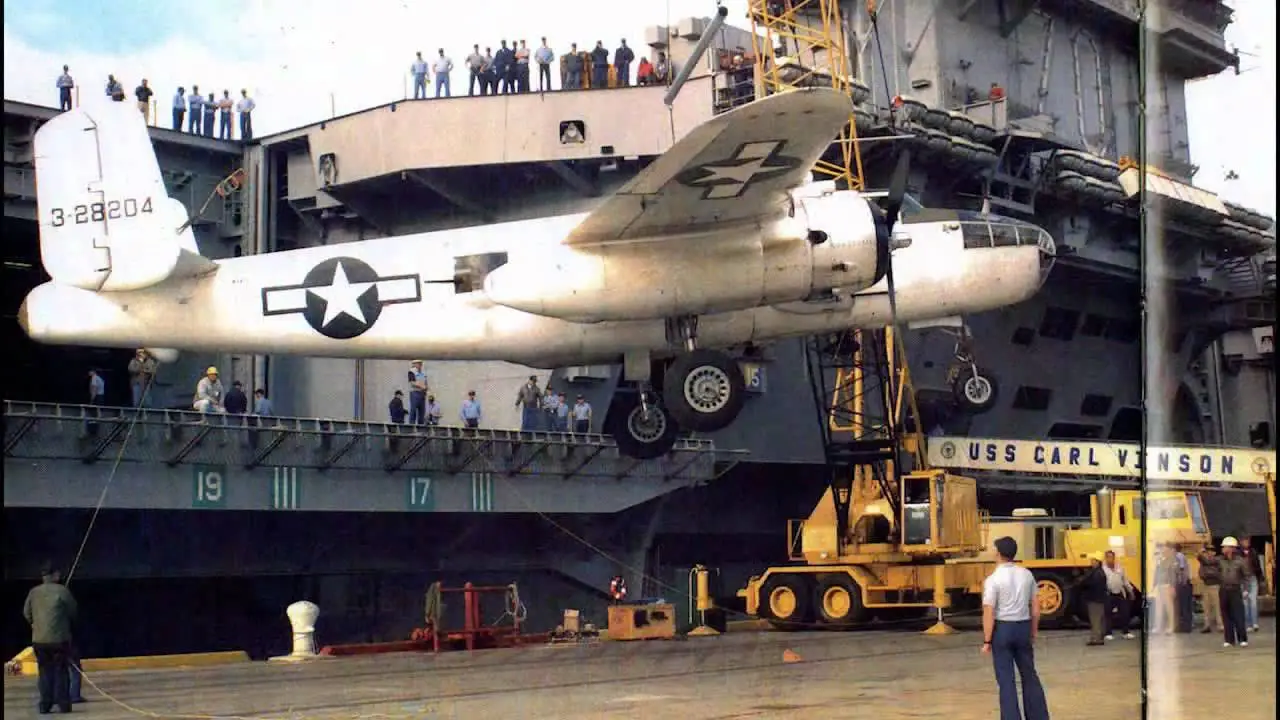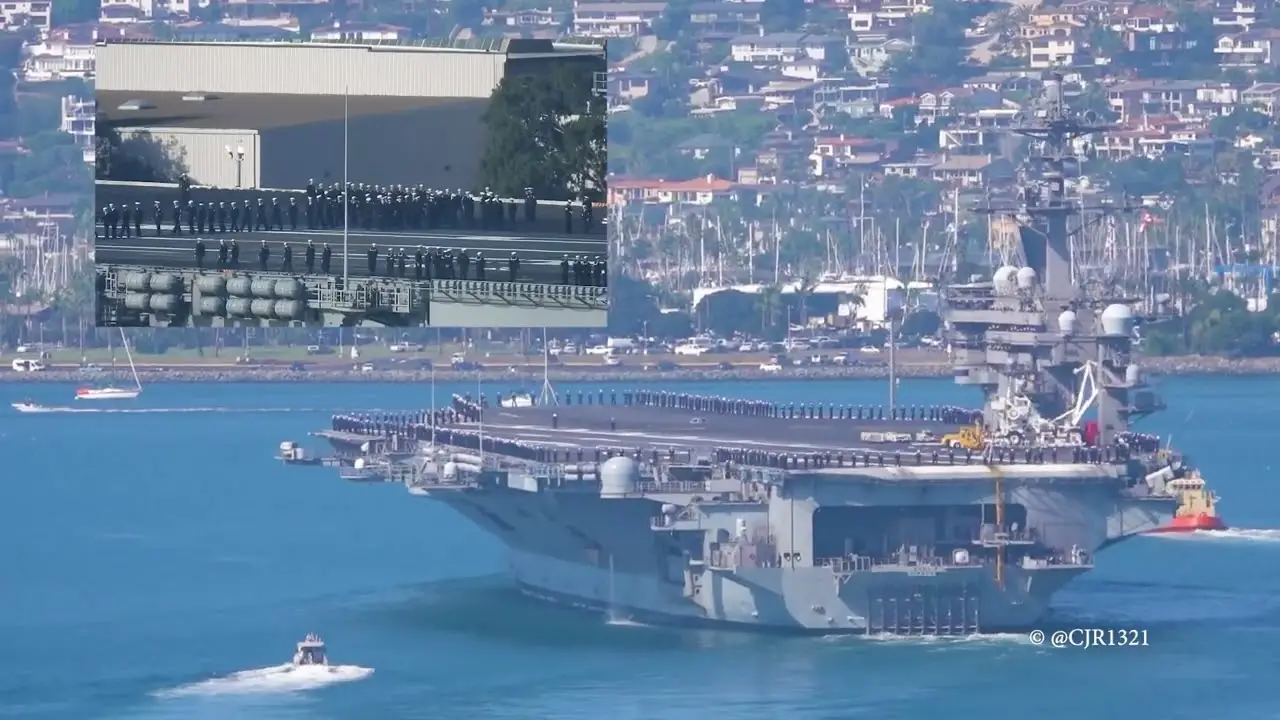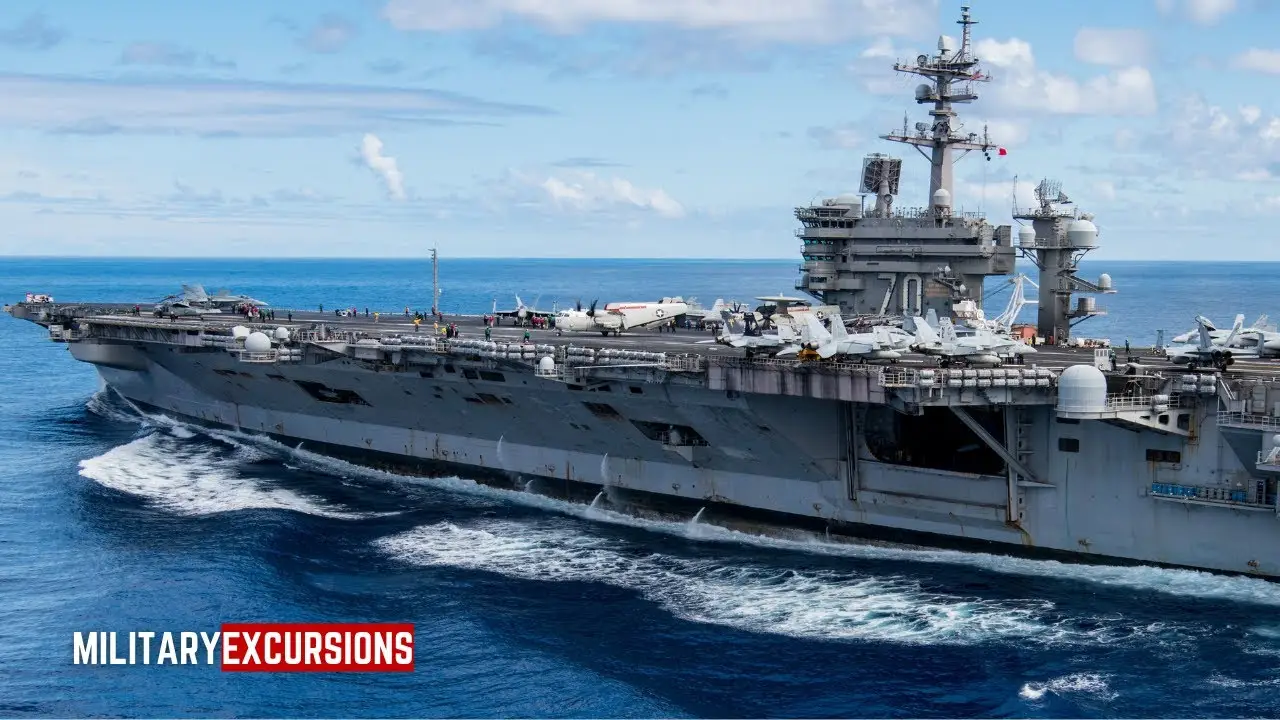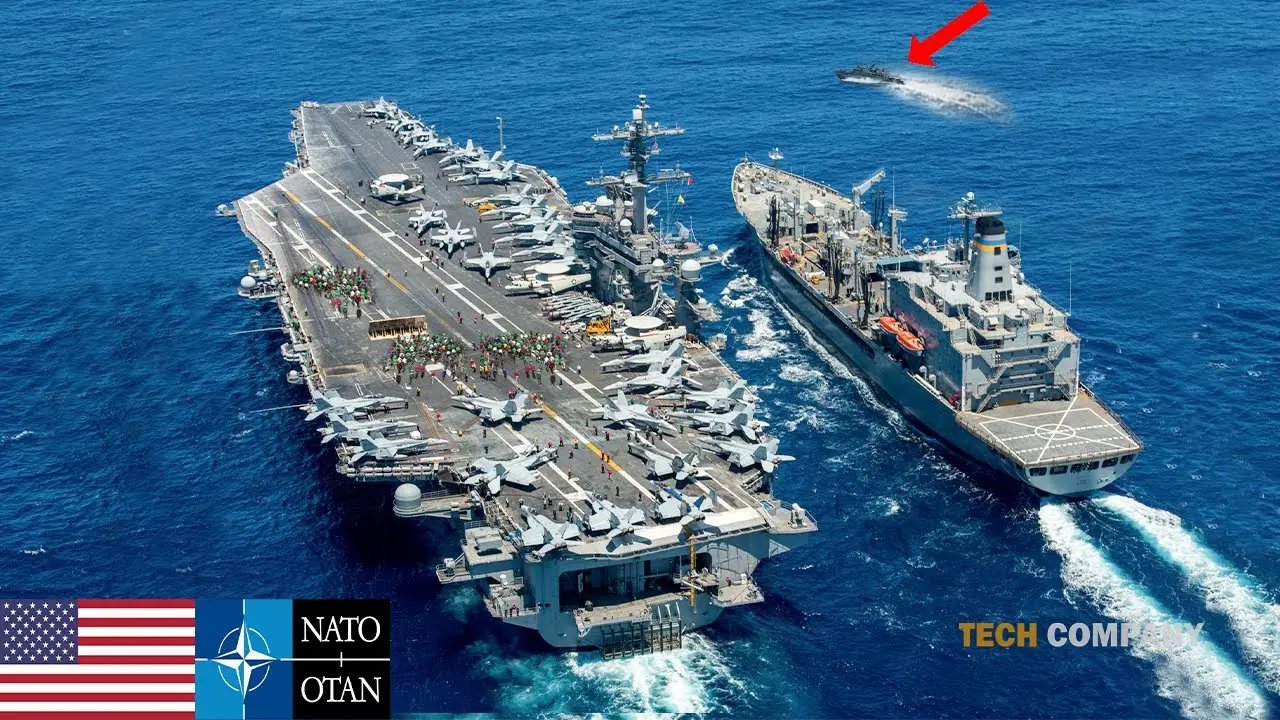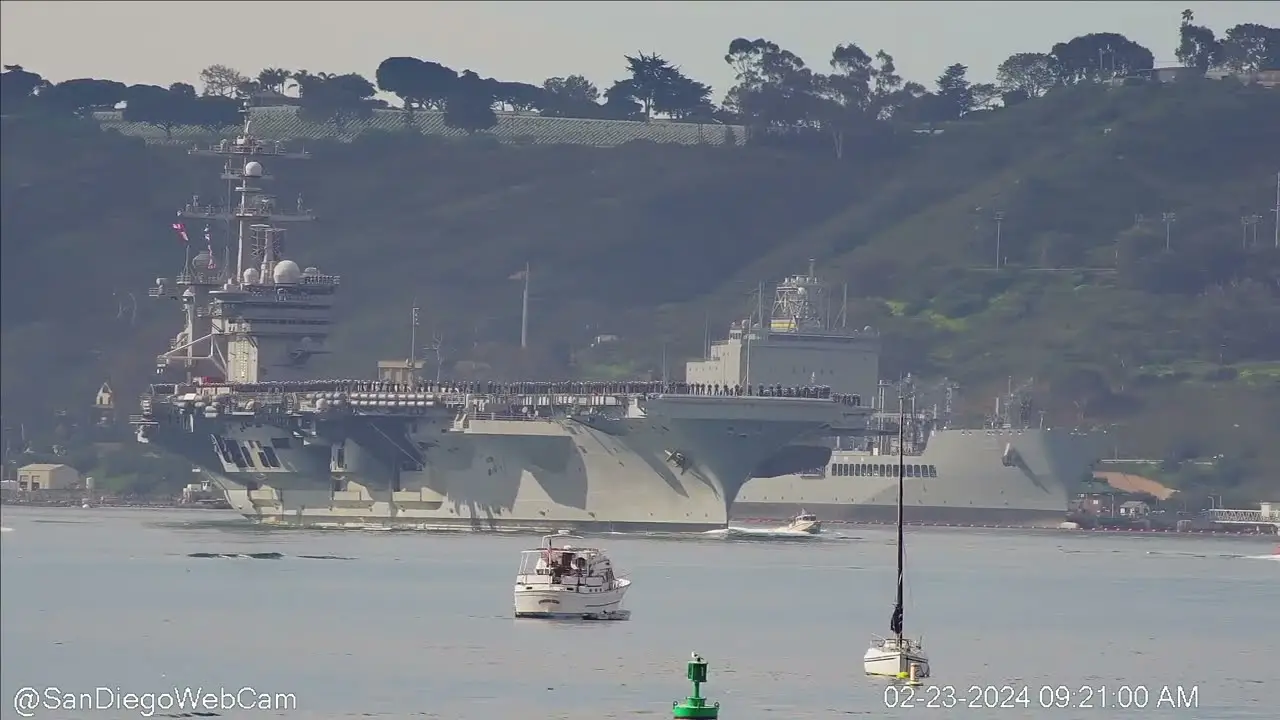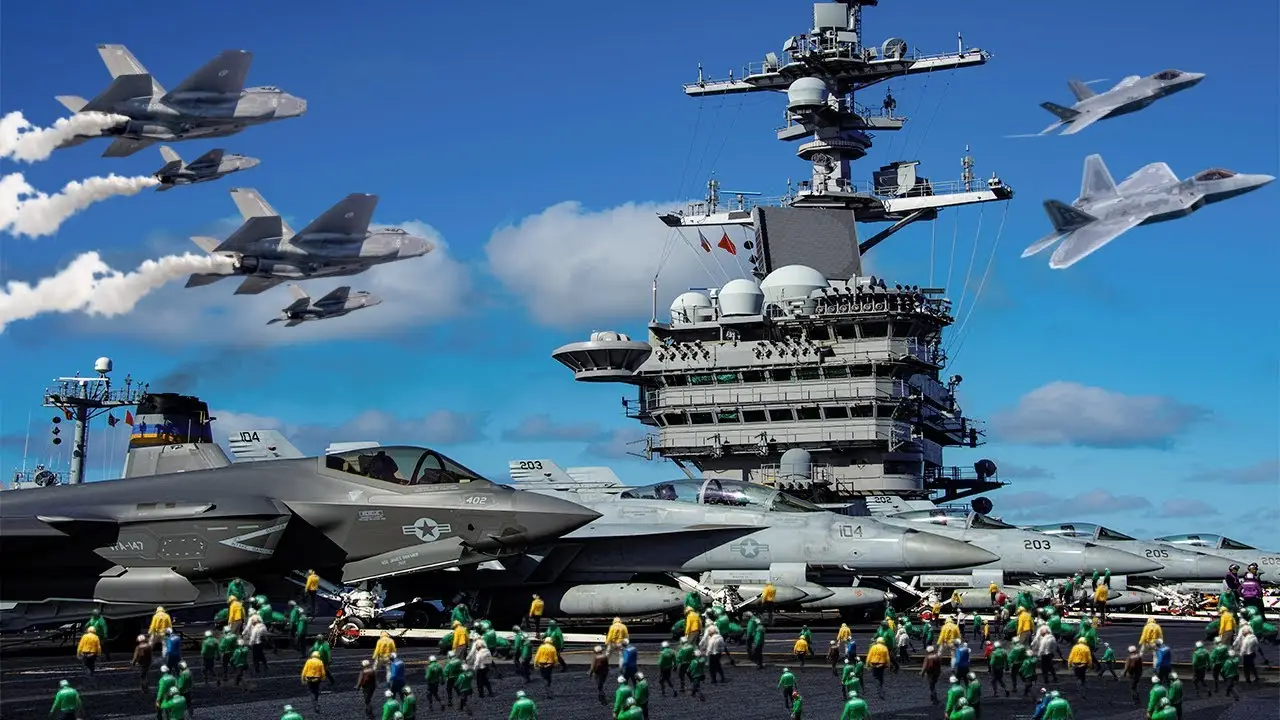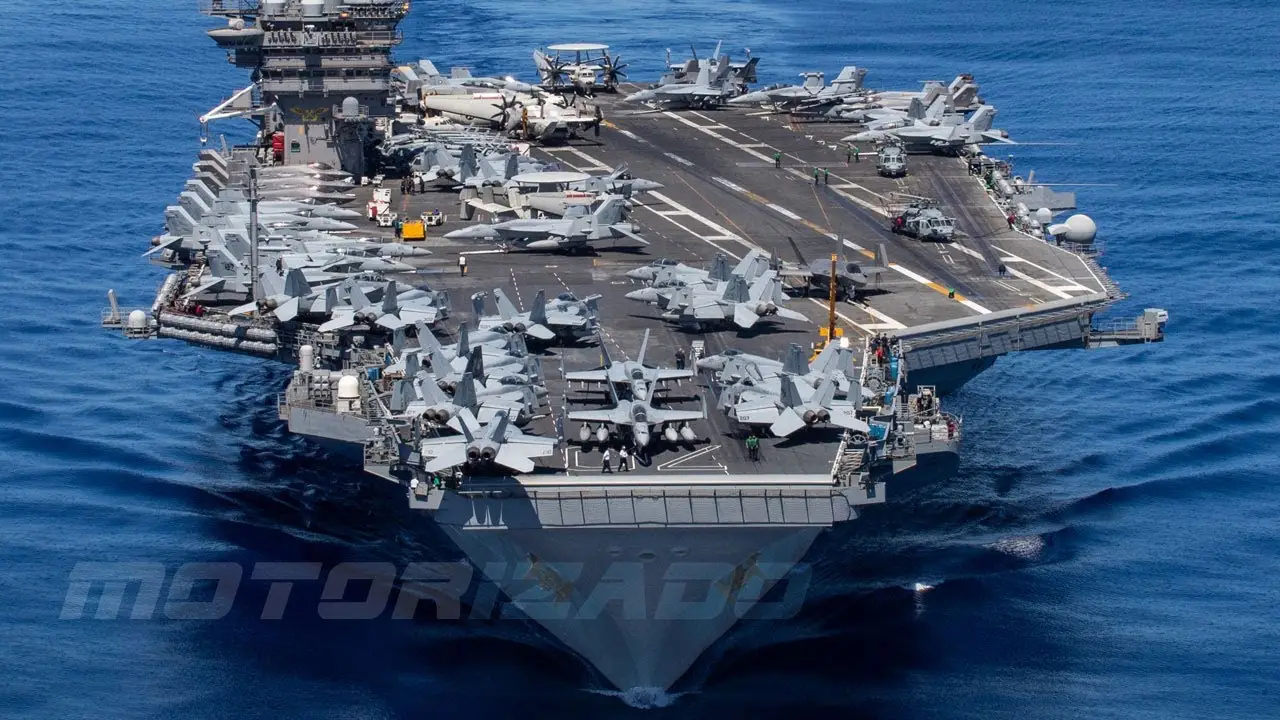USS Carl Vinson (CVN-70) History, Specifications, and Impact

The USS Carl Vinson (CVN-70) is a Nimitz-class nuclear-powered aircraft carrier of the United States Navy. It is named after Congressman Carl Vinson, who played a significant role in increasing the naval power during World War II. The ship was commissioned in 1982 and has since then been a key player in various military operations and deployments across the globe. In this blog post, we will take a closer look at the history, specifications, and impact of the USS Carl Vinson.
Overview of USS Carl Vinson (CVN-70)
The USS Carl Vinson has been an integral part of the United States Navy’s fleet for almost four decades now. It was built by Newport News Shipbuilding Company and is the third ship in the Nimitz class. The ship measures 1,092 feet in length, making it one of the largest warships in the world. It has a displacement of 94,000 tons and can carry over 85 aircraft, including fighter jets, helicopters, and other support aircraft.
The ship is powered by two nuclear reactors, which give it a top speed of over 30 knots or 56 km/h. It also has advanced radar and electronic equipment, making it a formidable force in any naval operation. The USS Carl Vinson has been involved in numerous missions and operations, solidifying its place as one of the most reliable and versatile warships in the world.
History of USS Carl Vinson (CVN-70)
The USS Carl Vinson was named after Congressman Carl Vinson, who served as the Chairman of the House Armed Services Committee from 1949 to 1953. He was known as the “Father of the Two-Ocean Navy” for his efforts to increase the naval power of the United States during World War II. Construction of the ship began in 1975, and it was commissioned in 1982.
The ship’s first deployment was in 1983 to the Western Pacific, where it took part in various training exercises with allied navies. In 1990, the USS Carl Vinson was deployed to the Persian Gulf as part of Operation Desert Shield, which was the United States’ response to Iraq’s invasion of Kuwait. During this deployment, the ship served as a floating airport for coalition forces, playing a crucial role in the successful outcome of the operation.
In 2001, the USS Carl Vinson was again deployed to the Persian Gulf, this time in support of Operation Enduring Freedom. It launched the first airstrikes against Taliban targets in Afghanistan and later provided air support for coalition troops on the ground. The ship has also been involved in humanitarian missions, such as providing relief after the Indian Ocean tsunami in 2004 and the earthquake in Haiti in 2010.
Specifications of USS Carl Vinson (CVN-70)
The specifications of the USS Carl Vinson are impressive and showcase its capabilities as an aircraft carrier. Here is a breakdown of some of its key features:
Dimensions and Displacement
- Length: 1,092 feet
- Beam: 134 feet
- Draft: 41 feet
- Displacement: 94,000 tons
Propulsion
- Two A4W nuclear reactors
- Four shafts
- Four steam turbines
- Total Power Output: 260,000 horsepower
- Top Speed: Over 30 knots (56 km/h)
Armament
- Three Mk-29 NATO Sea Sparrow launchers
- Three Phalanx Close-In Weapon Systems
- Two RIM-116 Rolling Airframe Missile launchers
- Tomahawk and Harpoon missiles
Aircraft Capacity
- Over 85 aircraft, including F/A-18 Hornets, E-2C Hawkeyes, EA-6B Prowlers, and MH-60R/S Seahawks.
Operations and Deployments of USS Carl Vinson (CVN-70)
The USS Carl Vinson has been involved in numerous operations and deployments since its commissioning in 1982. Some notable ones include:
Operation Desert Shield/Storm (1990-1991)
As mentioned earlier, the USS Carl Vinson played a crucial role in Operation Desert Shield, the United States’ response to Iraq’s invasion of Kuwait. During this operation, the ship acted as a floating airport for coalition forces, providing air support for Operation Desert Storm, which was the ground campaign against Iraq.
Operation Enduring Freedom (2001-2002)
In 2001, the USS Carl Vinson was deployed to the Persian Gulf in support of Operation Enduring Freedom, the United States’ response to the September 11th terrorist attacks. It launched the first airstrikes against Taliban targets in Afghanistan and later provided air support for coalition troops on the ground.
Operation Iraqi Freedom (2003-2010)
The USS Carl Vinson was deployed to the Arabian Sea in support of Operation Iraqi Freedom, the United States’ response to Iraq’s alleged possession of weapons of mass destruction. It was involved in several airstrikes and provided support for ground troops during the invasion of Iraq.
Humanitarian Missions
The USS Carl Vinson has also been involved in various humanitarian missions, showcasing its versatility and impact beyond military operations. In 2004, it provided relief efforts after the Indian Ocean tsunami, delivering supplies and medical aid to affected areas. In 2010, it was again deployed for humanitarian purposes, this time to provide relief after the devastating earthquake in Haiti.
Crew and Personnel of USS Carl Vinson (CVN-70)
The USS Carl Vinson has a crew of over 6,000 people, including both military and civilian personnel. The majority of the crew is made up of sailors who operate and maintain the ship’s systems and equipment. There are also various specialized teams on board, such as aviation units, medical personnel, and administrative staff.
The commanding officer of the USS Carl Vinson is responsible for the overall operation of the ship and its crew. The current commanding officer is Captain Douglas C. Verissimo. The ship also has a carrier air wing, which provides air support and operations from the flight deck. The current carrier air wing assigned to the USS Carl Vinson is Carrier Air Wing 2, which includes various fighter, attack, and support aircraft.
Exploring the History and Impact of USS Dwight D. Eisenhower (CVN-69)
Weapons and Capabilities of USS Carl Vinson (CVN-70)
As one of the most advanced warships in the world, the USS Carl Vinson is equipped with state-of-the-art weaponry and capabilities. The weapons and capabilities of the ship include:
Combat Systems
- Aegis Weapons System
- AN/SPQ-9B Radar
- MK 15 Phalanx Close-In Weapon Systems
- RIM-7 NATO Sea Sparrow
- Rolling Airframe Missile (RAM) system
Aviation Capabilities
- Over 85 aircraft capacity
- Advanced radar and communication systems
- Ability to launch and recover multiple aircraft simultaneously
- Ability to conduct long-range, sustained combat air operations
Strategic Capabilities
- Nuclear-powered propulsion system
- Large storage capacity for fuel, food, and other supplies
- Advanced medical facilities and capabilities
Notable Events and Accidents Involving USS Carl Vinson (CVN-70)
Despite its impressive record and capabilities, the USS Carl Vinson has also experienced some notable events and accidents throughout its history. Here are a few that stand out:
North Korean Defector Incident (1996)
In 1996, a North Korean defector was found on board the USS Carl Vinson after he managed to swim to the ship from a nearby fishing boat. The incident raised concerns about the security of the ship and its vulnerability to potential threats.
Helicopter Crash (2013)
In 2013, a Navy MH-53E Sea Dragon helicopter crashed on the flight deck of the USS Carl Vinson during a training exercise, killing three crew members. The crash was attributed to mechanical failure and highlighted the dangers and risks involved in operating such advanced machinery.
COVID-19 Outbreak (2020)
In early 2020, the USS Carl Vinson experienced an outbreak of COVID-19 among its crew members while on deployment in the Western Pacific. The ship had to make an unplanned stop in Guam to offload infected personnel and undergo extensive cleaning before continuing its deployment.
Future Plans for USS Carl Vinson (CVN-70)
The USS Carl Vinson is expected to serve in the United States Navy until at least 2030. However, plans are already in place for its replacement, which will be a Gerald R. Ford-class aircraft carrier. The new ship, also named USS Carl Vinson, is expected to be commissioned in 2028 and will continue the legacy of its predecessor.
Comparison to Other Aircraft Carriers
The USS Carl Vinson is not the only aircraft carrier in the world. There are several others, including the USS Nimitz (CVN-68), which is the first ship in the Nimitz class and the namesake of the class. Here is a brief comparison of the USS Carl Vinson to other notable aircraft carriers:
| Ship Name | Country | Length | Displacement | Aircraft Capacity |
|---|---|---|---|---|
| USS Carl Vinson (CVN-70) | United States | 1,092 feet | 94,000 tons | Over 85 aircraft |
| USS Nimitz (CVN-68) | United States | 1,092 feet | 100,000 tons | Over 90 aircraft |
| HMS Queen Elizabeth (R08) | United Kingdom | 932 feet | 65,000 tons | Up to 70 aircraft |
| Liaoning (16) | China | 993 feet | 60,000 tons | 50 aircraft |
Impact and Legacy of USS Carl Vinson (CVN-70)
The USS Carl Vinson has had a significant impact on the United States Navy’s capabilities and operations over the years. Its advanced technology, impressive specifications, and versatile capabilities have made it a crucial asset in various military missions and humanitarian efforts. The ship has served as a symbol of strength and resilience for the United States, showcasing its commitment to maintaining peace and stability across the globe.
In addition to its impact on the military front, the USS Carl Vinson has also played a significant role in international relations and diplomacy. Its presence in different parts of the world has helped strengthen alliances and partnerships between the United States and other nations. Furthermore, the ship’s namesake, Congressman Carl Vinson, has left a lasting legacy through his contributions to expanding the United States’ naval power, which continues to this day.
Conclusion
The USS Carl Vinson (CVN-70) is more than just a warship – it is a symbol of strength, resilience, and cooperation. From its impressive specifications and capabilities to its involvement in numerous operations and missions, the ship has solidified its place as one of the most advanced and reliable aircraft carriers in the world. As it continues to serve until at least 2030, the USS Carl Vinson will undoubtedly leave a lasting impact and carry on the legacy of its namesake, Congressman Carl Vinson.

